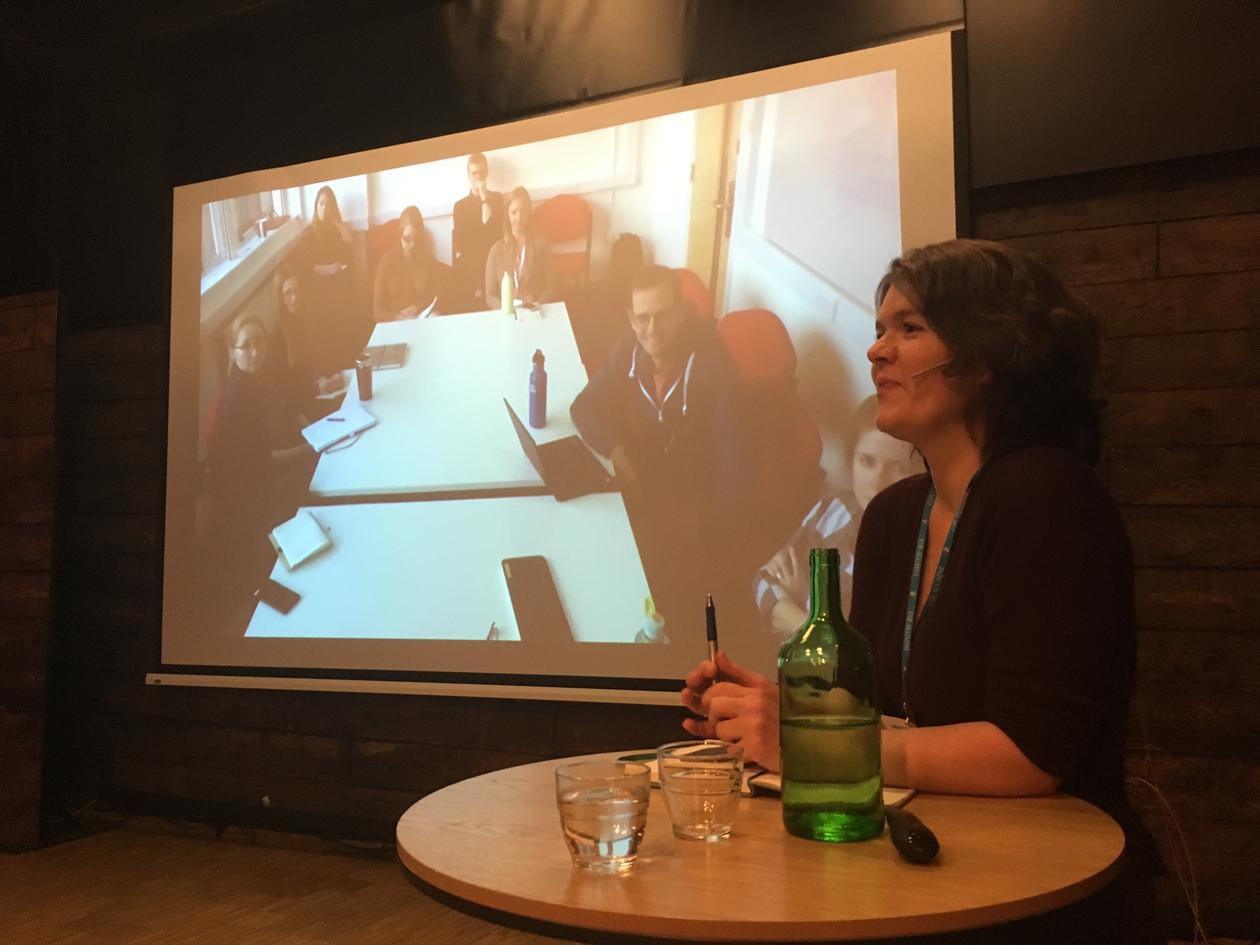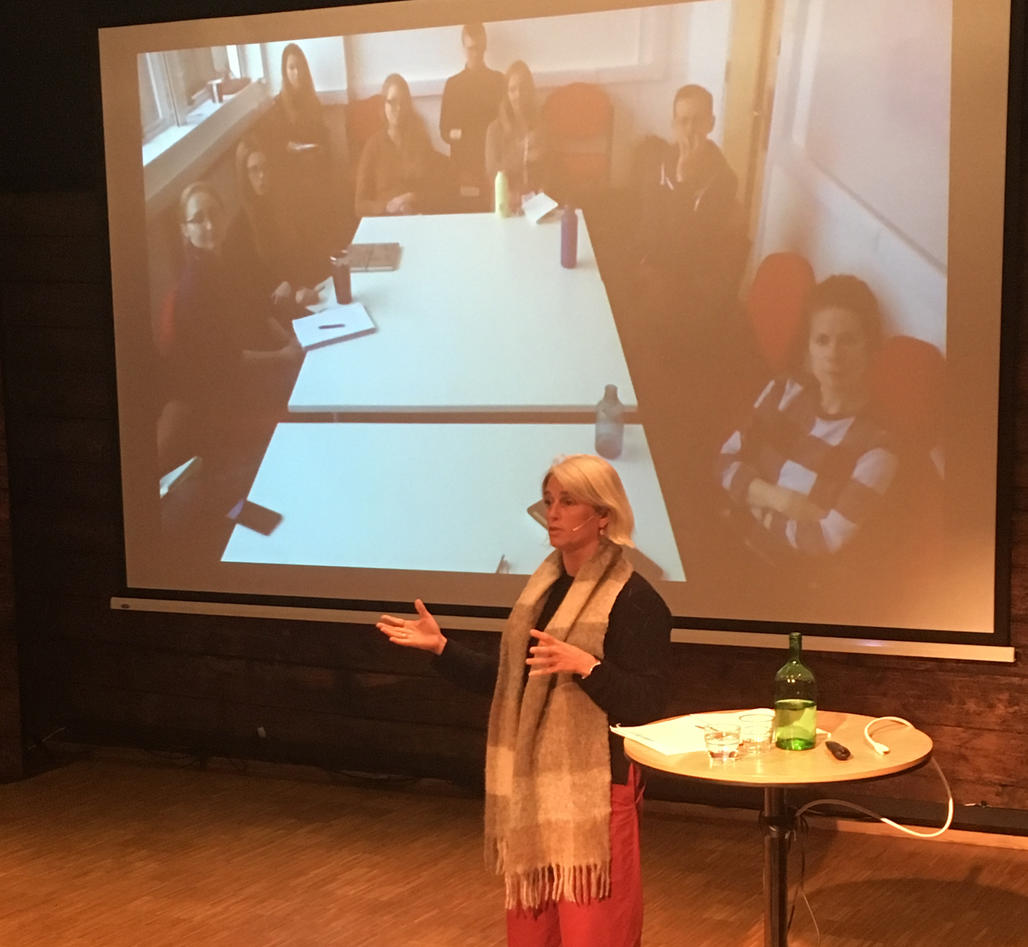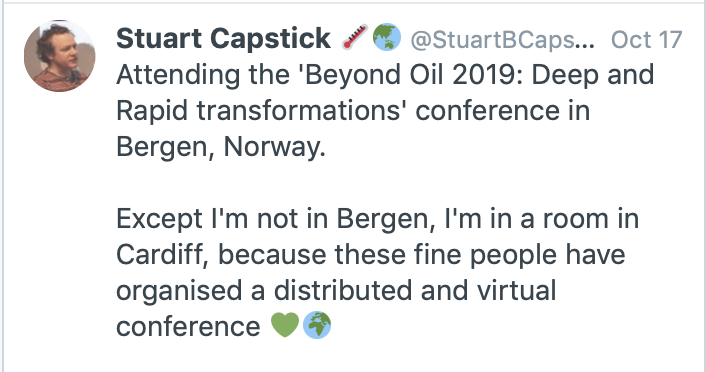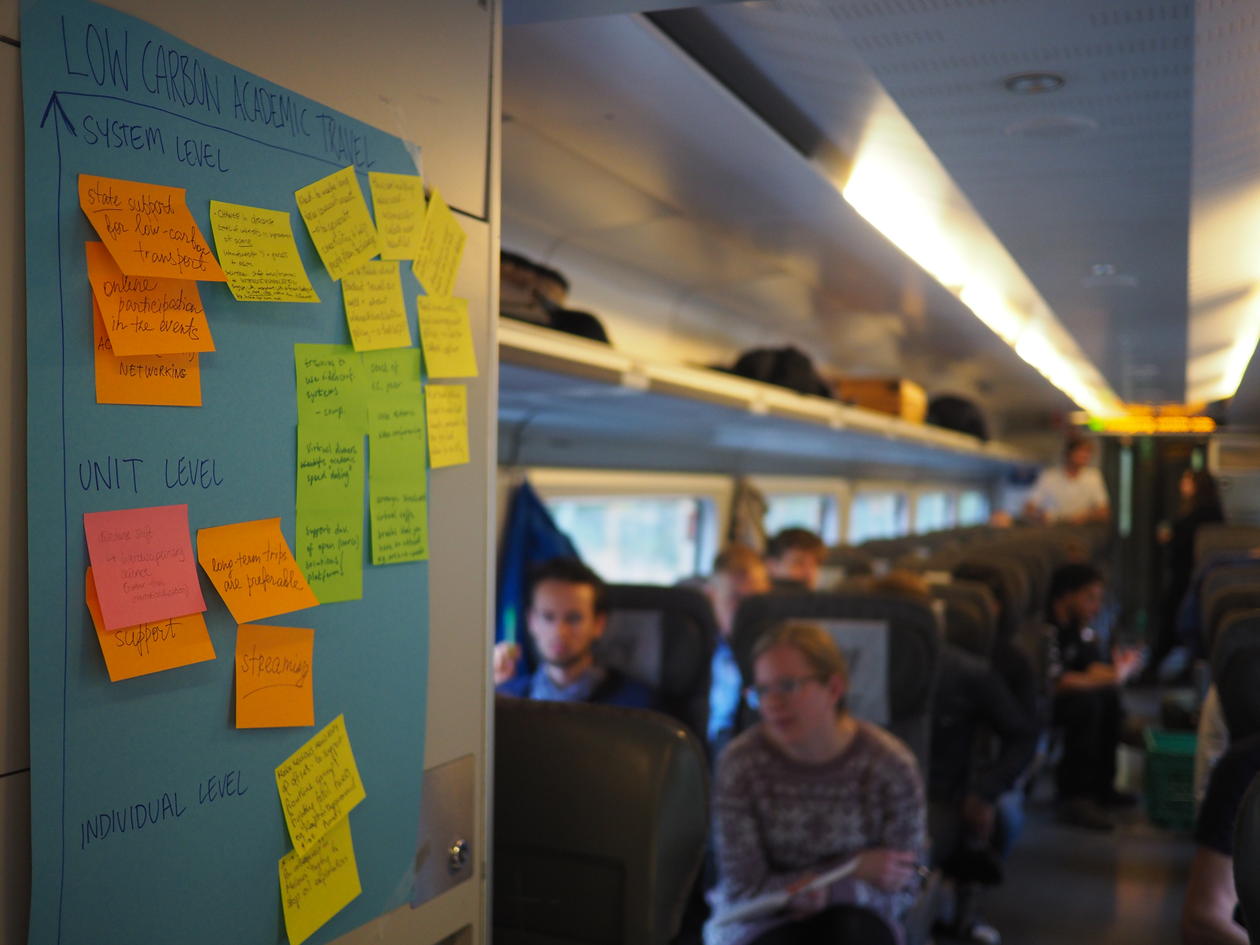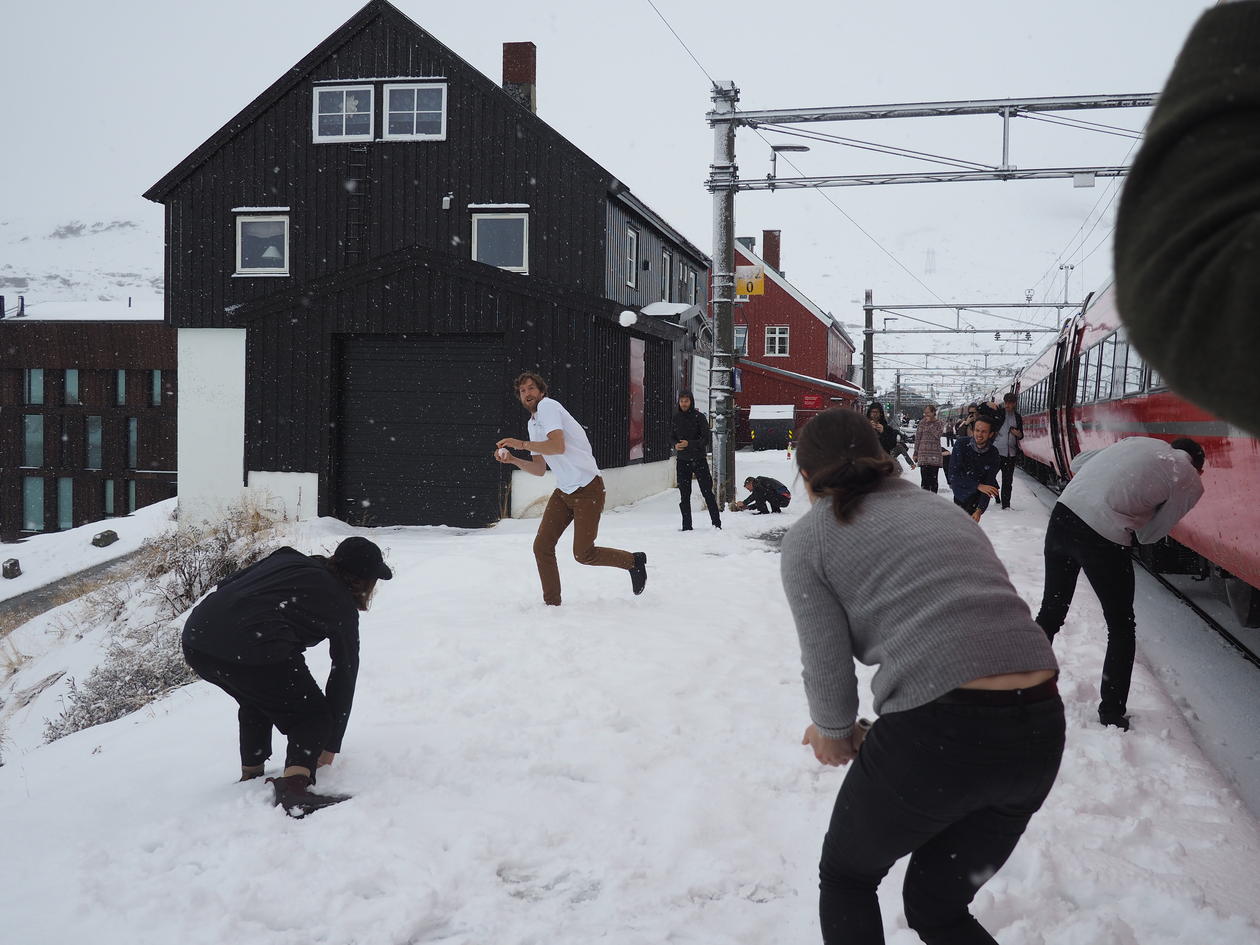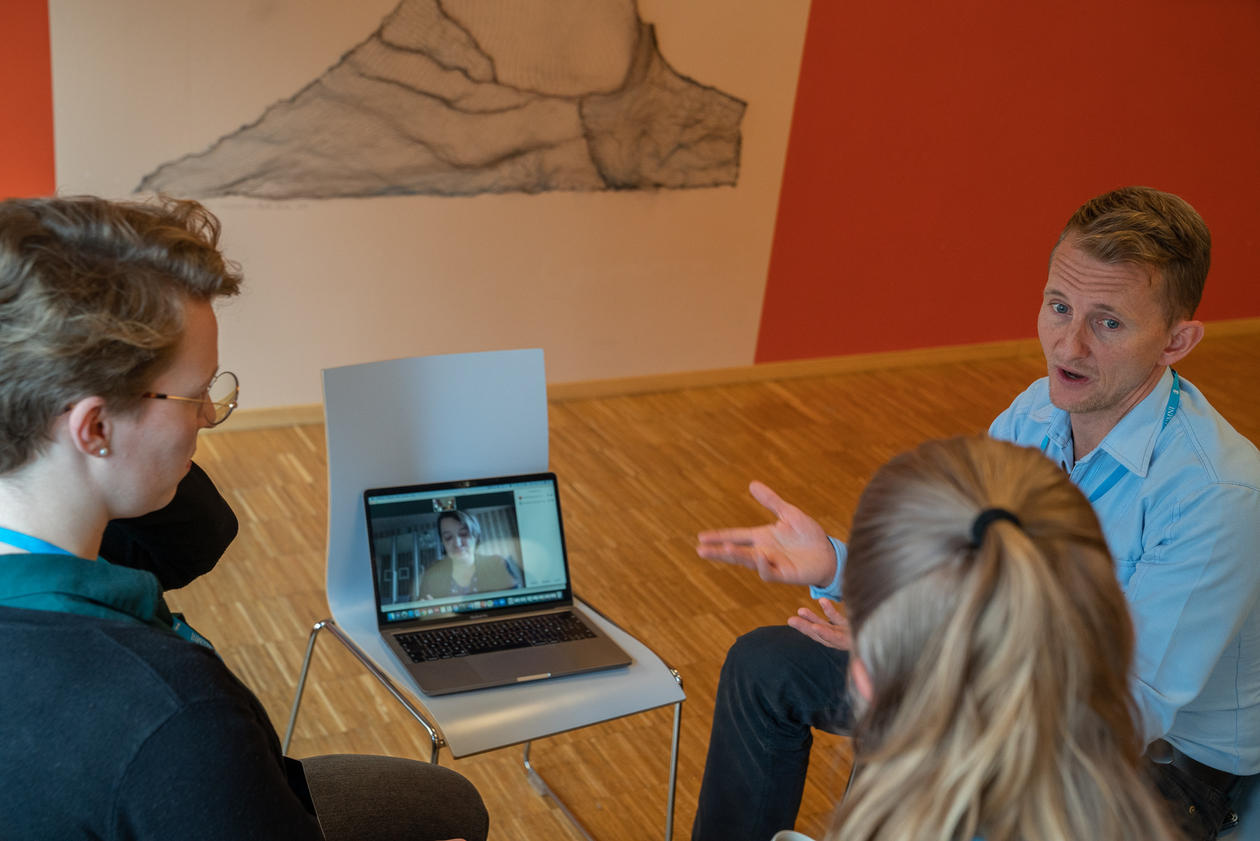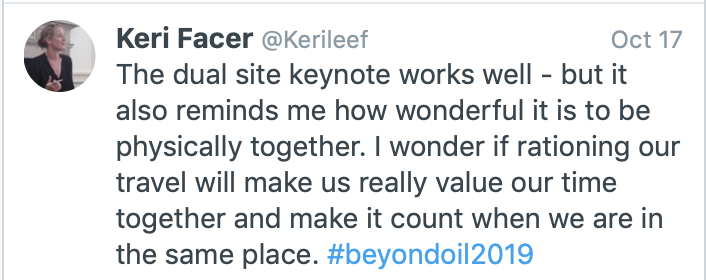Low-carbon conferencing: CO2e, experiments and lessons learned.
How can we organize an international conference and at the same time, reduce our climate impact? This became the central question while organising our third edition of the Beyond Oil conference. We are happy to reveal that our 2019 conference halved the emissions of the previous conference in 2017.

Hovedinnhold
Deep and Rapid Transformations was this year’s theme for CET’s biannual Beyond Oil conference. We wanted to create an interdisciplinary and international conference of high quality. We also wanted to address the high emissions that come from such conferences.
In 2018 we launched the CET Low-carbon travel policy, and during this work, we became acutely aware of the CO2 emissions connected to planning international conferences. It became clear when planning the 2019 conference that we needed to walk the talk.
Before we discuss the activities we experimented with, here are some numbers:
- Beyond Oil 2017: Although we did not have any carbon accounting practices at our 2017 conference, we have managed to calculate an estimate as a benchmark for our 2019 conference. This number landed at 22,8t CO2e, and the total number of participants was 80.
- Beyond Oil 2019: When our participants registered for the conference, they were asked to inform us about how they plan to travel to Bergen. Using this data, we have calculated a total of 11,8t CO2e, and the total number of participants was 130.
So, how did we manage to half our CO2 emissions from the 2017 conference?
Lessons from experiments in low-carbon practices
Our keynote speaker on the second day of the conference was Lorraine Whitmarsh, Professor of environmental psychology and director of the UK Centre for Climate Change & Social Transformations (CAST) located in Cardiff, UK. With technical help from the UiB’s Learning Lab, we created a dual-site keynote via video link.
A keynote via video link may not be revolutionary; however, we wanted to test how interactive this session could be. The CAST centre gathered a group of participants in Cardiff, and we had a moderator in Bergen. Whitmarsh presented her keynote presentation, and we had commentary from Agnes Tvinnereim in Bergen, and Graham Craig from the Welsh Government in Cardiff. The floor was then open for questions, and we relayed between the two locations.
A surprising effect of this format is after a short time in the session you almost forgot that we were not in the same room. This idea can be further developed and opens up opportunities for future collaborations with other conferences.
Remote paper presentation
As well as a keynote presentation via video link, we had three remote presentations in the parallel sessions. The presenters included two from Switzerland and one from Stanford in the USA, resulting in a saving of 3 tCO2e.
There was a lot of anticipation in how these remote presentations would work with our 8-minute presentations and long discussion format, but the feedback has mainly been positive. For these sessions, we did not use any advanced technology. Presentations were done via zoom and shown through the projector. For the discussion part of the session, the computer was moved to a chair, and the group discussed the paper with the presenter
CET Conference train
One of the most ambitious plans we had for the conference was our “conference train”. In collaboration with Vy (the Norwegian train company), we hired a carriage on the 12.03 train from Oslo-Bergen on Tuesday, October 15. The idea was to offer a free train ride for attendees and motivate them to think differently about travelling to the conference.
Not only did we want our participants to consider travelling low-carbon, but we also wanted to prove that slow travelling doesn’t have to be boring. We created an extra conference day with engaging content, on the train!
We couldn't have been happier with the result. 25 Beyond Oil participants joined our conference train committee for a 7-hour train ride out of the ordinary. The program consisted of lectures, group discussions and workshops on the themes of low-carbon academic practices, embodied knowledge and academic engagement.
It was messy; with announcements interrupting lectures, unstable footing, and some motion sickness (but nothing a 5-minute snowball fight at Finse couldn’t fix).
However, innovation often is just that, messy.
Low-carbon travel funds
Early in our conference planning, we had an idea of "Low-Carbon travel funds" where participants were invited to explore low-carbon travel alternatives. They could then apply for funding to compensate for extra costs. Logistical issues related to travelling by train in Europe made this difficult for many participants resulting in not many applications. We redistributed these travel funds to hiring the train carriage from Vy.
Also, all meals served at the conference were vegetarian, something that has become a standard at events at the CET centre.
Carbon budget thinking, equity and diversity
Early in our planning stage, we discussed the idea of using a carbon budget for the conference. How do we implement a carbon budget and still allow for diversity in who attends and presents at the conference?
While this work is still in progress, the intention of developing a carbon budget for a university centre such as CET is to provide a way of creating long term climate goals and help in planning for the reduction of greenhouse gas emissions. Such budgeting approach also supports the monitoring of emissions, making sure that emissions are on track.
The use of a carbon budget approach in planning for the conference allowed to start discussing what our priorities as conference organiser are – and also allowed to open up a space for considering how ideas of equity in representation and diversity of presentations come to play in practice.
The use of ICT or remote presentations were some of the options that allowed for more diversity in the parallel sessions.
The future of conferencing
So, where do we go from here? Should we continue to travel to conferences? Our director, Håvard Haarstad, suggested at the closing of the conference:
- Conferences are very costly, in emissions and other things. I think what can outweigh this, make it worth it, is that we can create situations where new insights can grow. In conferences, we can create different types of situations that we can’t get from just reading papers. We can place ourselves in new, awkward and discomforting situations And this is productive. I think it forces us to think deeper and see new things. When we are in the room together, we learn something.
